Inside: Discover 24 Florida-friendly plants that love full sun and heat, perfect for brightening your garden all season long. These plants handle the strong Florida sun while adding color and life to your outdoor space.
If you want a garden that thrives in the sun without much fuss, this list is for you.
You’ll find plants that can handle the Florida heat and look great, making your gardening efforts easier and more rewarding.
Whether you’re a beginner or a seasoned gardener, these sun-loving plants can bring fun and beauty to your yard.
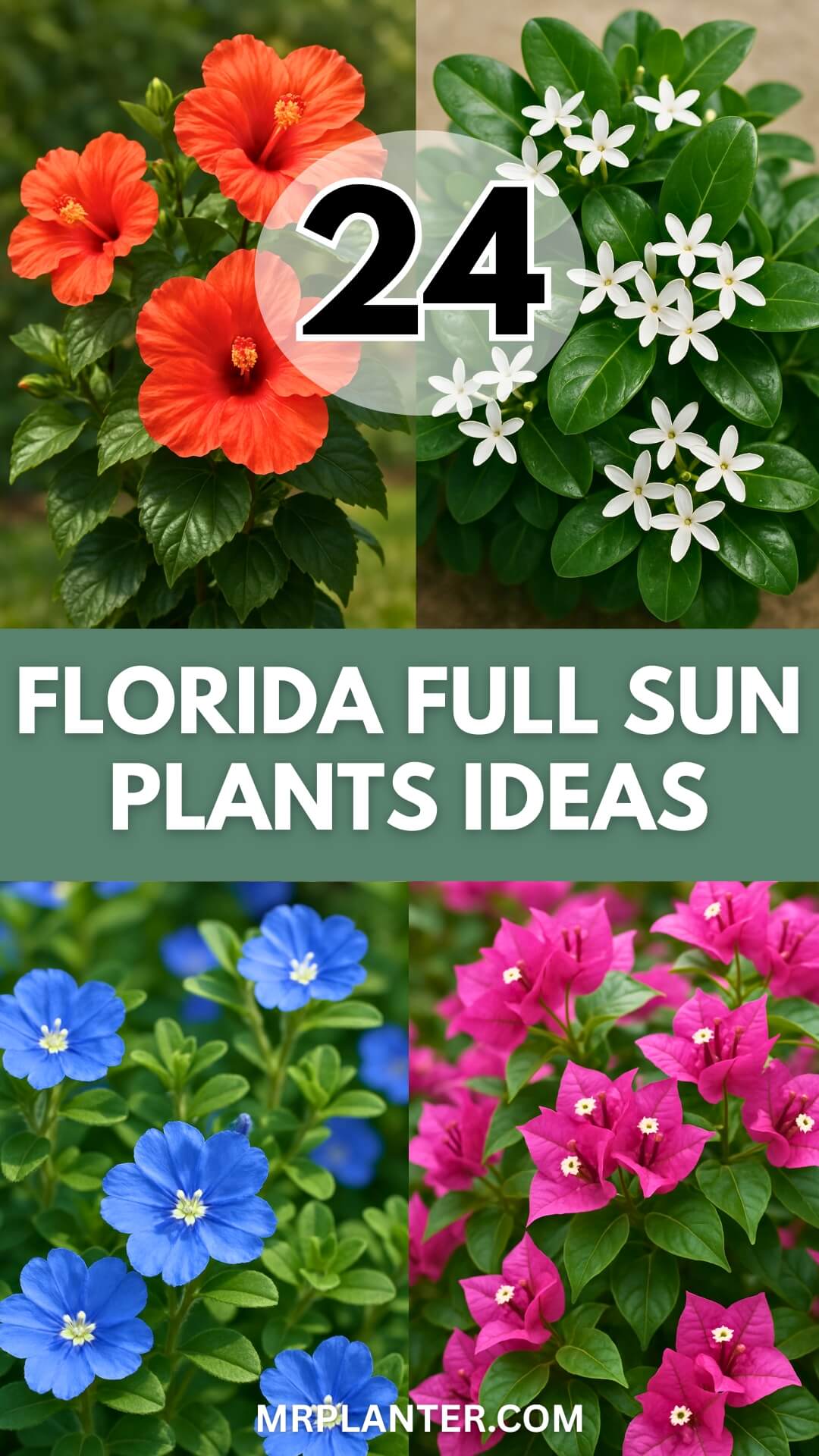
1. Evolvulus

Evolvulus is a low-growing plant that spreads widely and adds bright blue flowers to your garden. It works best in full sun, needing at least 6 to 8 hours of direct sunlight each day.
This plant likes soil that drains well, so avoid areas where water pools. It can handle partial shade but looks its best with plenty of sun.
You can plant Evolvulus in groups, spacing them about 18 to 24 inches apart. This helps create a vibrant carpet of blue flowers that stand out in Florida landscapes.
Evolvulus also does well in hanging baskets or containers if you want a splash of color on patios or porches.
Expert Tip from MrPlanter: “Plant Evolvulus where it gets plenty of sun for the brightest blooms. Make sure the soil drains well to keep roots healthy.”
2. Firebush (Hamelia patens)
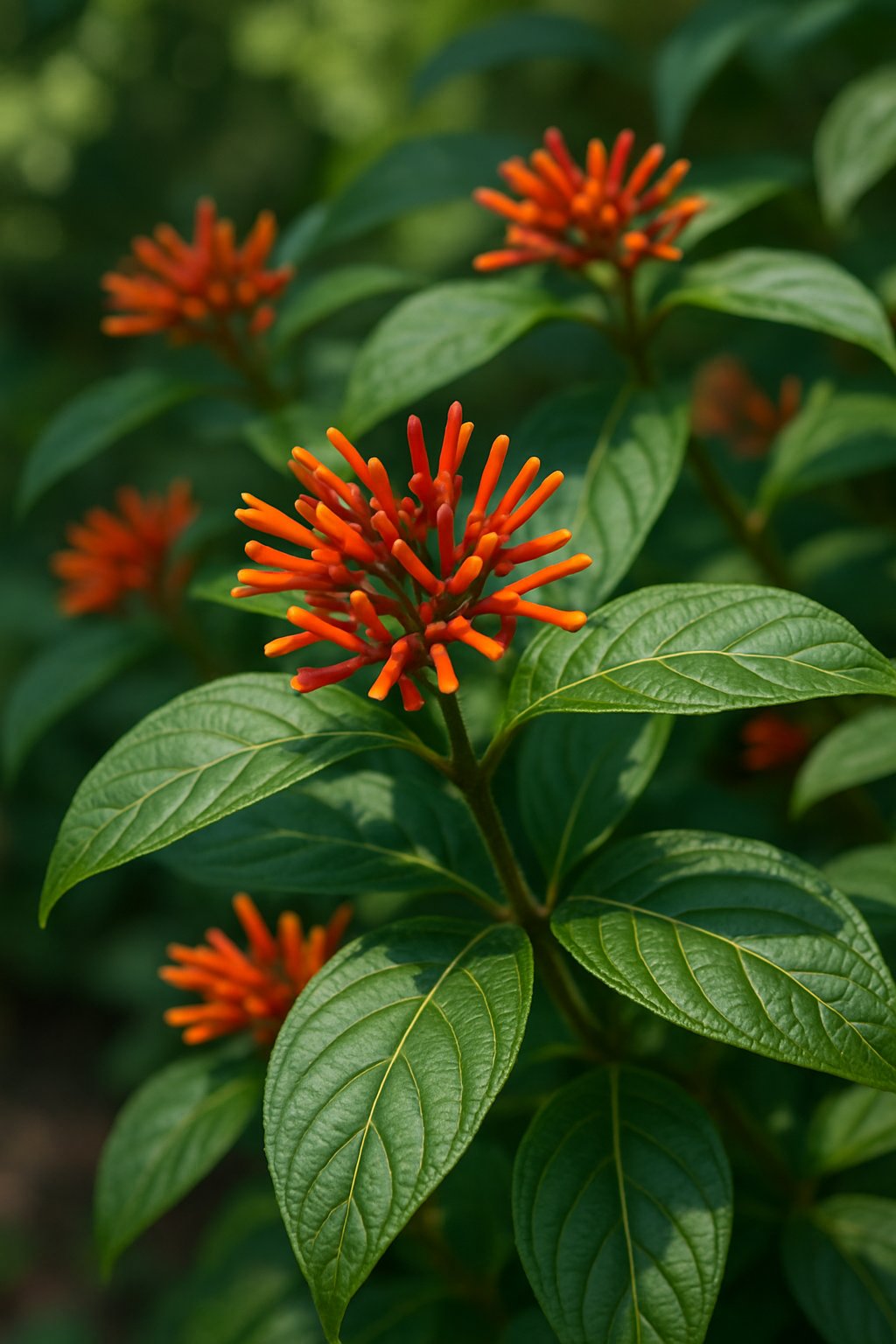
Firebush is a native Florida plant that grows about 5 to 6 feet tall and wide. It thrives in full sun or partial shade, making it easy to fit in your garden. The bright orange-red flowers attract butterflies, birds, and hummingbirds.
You can use firebush as a specimen plant or in groups for a colorful border. It adapts to many soil types and can handle drought well once established. Pruning helps keep it smaller if you want a tidier look.
The leaves are smooth and dark green, and the plant blooms most of the year in warm climates. Firebush is low-maintenance and a great choice for adding life to your garden.
Expert Tip from MrPlanter: “Plant firebush where you can watch the hummingbirds visit. Prune it lightly in spring to encourage fuller growth.”
3. Bougainvillea
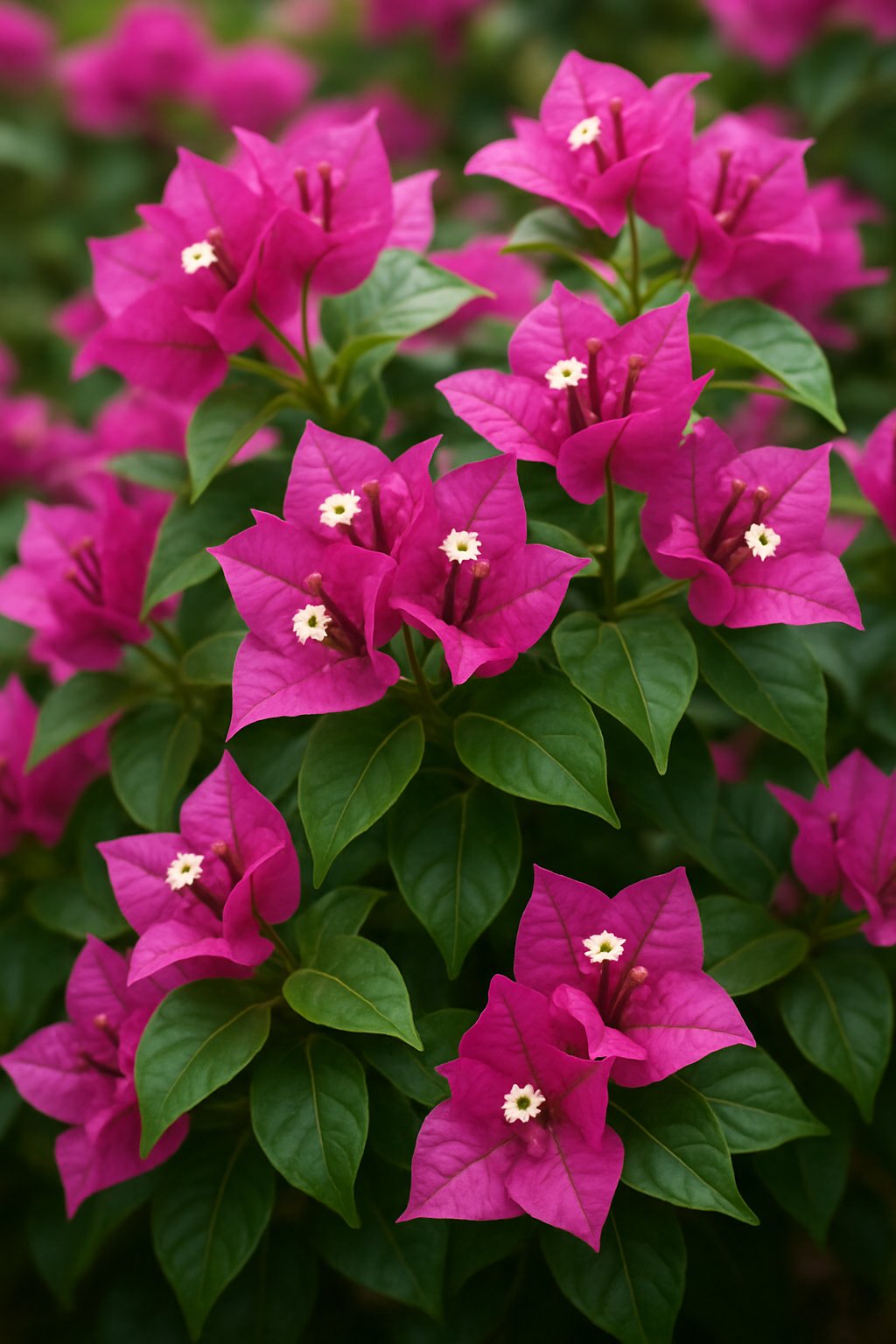
Bougainvillea loves full sun. It needs at least 6 to 8 hours of direct sunlight to grow well and produce bright blooms.
This plant does well in hot, dry weather. It grows best in well-drained, slightly acidic soil. Avoid planting it in shady or soggy spots.
Be careful with its thorns. They can prick your skin and cause irritation. Keep it away from walkways or places you touch often.
Bougainvillea can handle South Florida’s warm climate easily. It also stays healthy in both Zone 9B and Zone 10.
Expert Tip from MrPlanter: “Use well-drained soil to prevent root rot and prune regularly to keep your bougainvillea full and blooming.”
4. Perennial Peanut
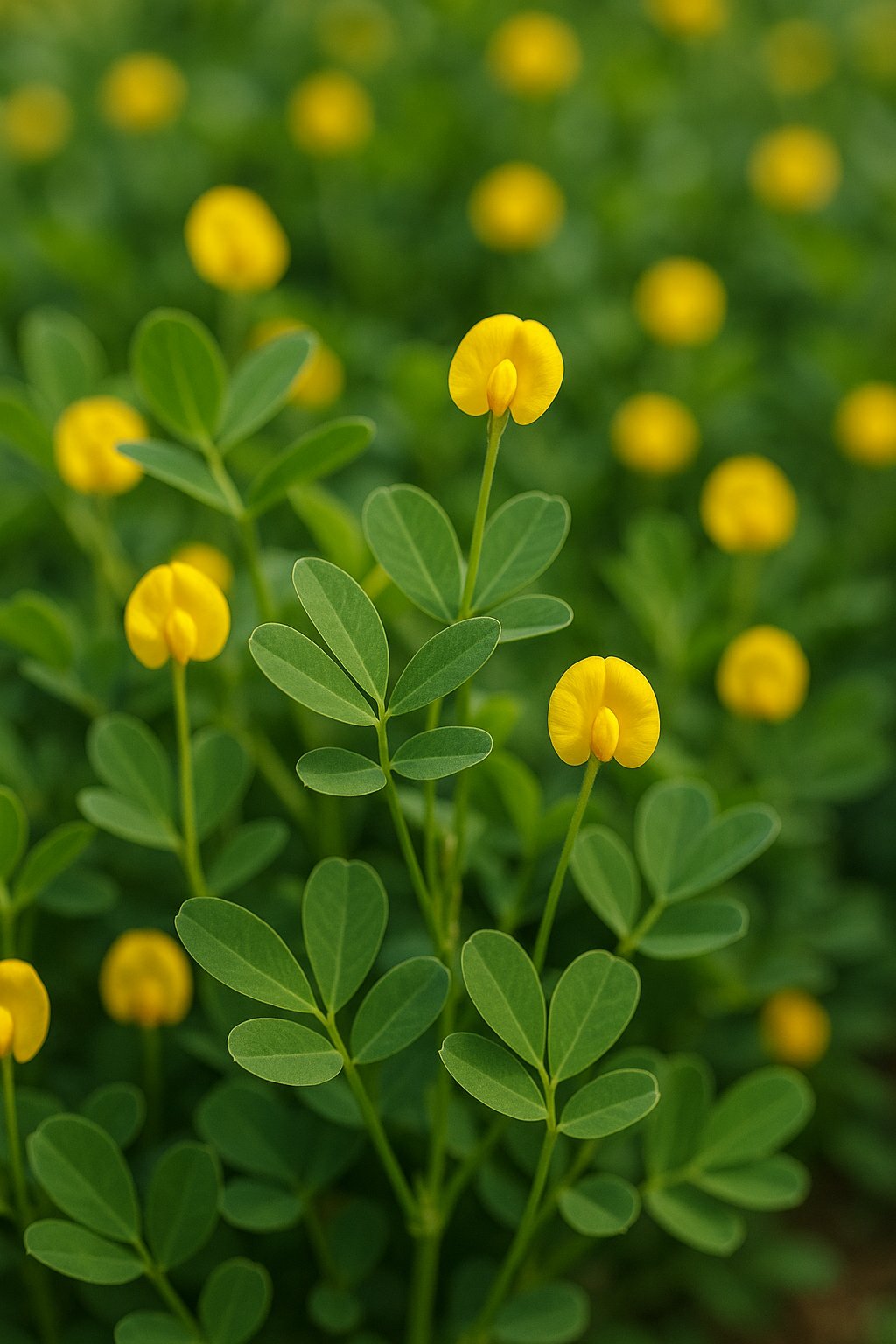
Perennial peanut is a great choice for Florida yards. It grows best in full sun but can also do well in partial shade.
This plant prefers well-drained soil and can handle dry periods once it is established. It produces small yellow flowers that add color to your garden.
Because it fixes nitrogen in the soil, you don’t need to use a lot of fertilizer. Mowing your perennial peanut helps it bloom more often.
You can use it as a ground cover or instead of grass for low-maintenance areas. It spreads slowly but creates a dense, green carpet.
Expert Tip from MrPlanter: “Plant perennial peanut where it will get at least 6 hours of sunlight for best growth. Keep mowing regularly to encourage more flowers.”
5. Hibiscus
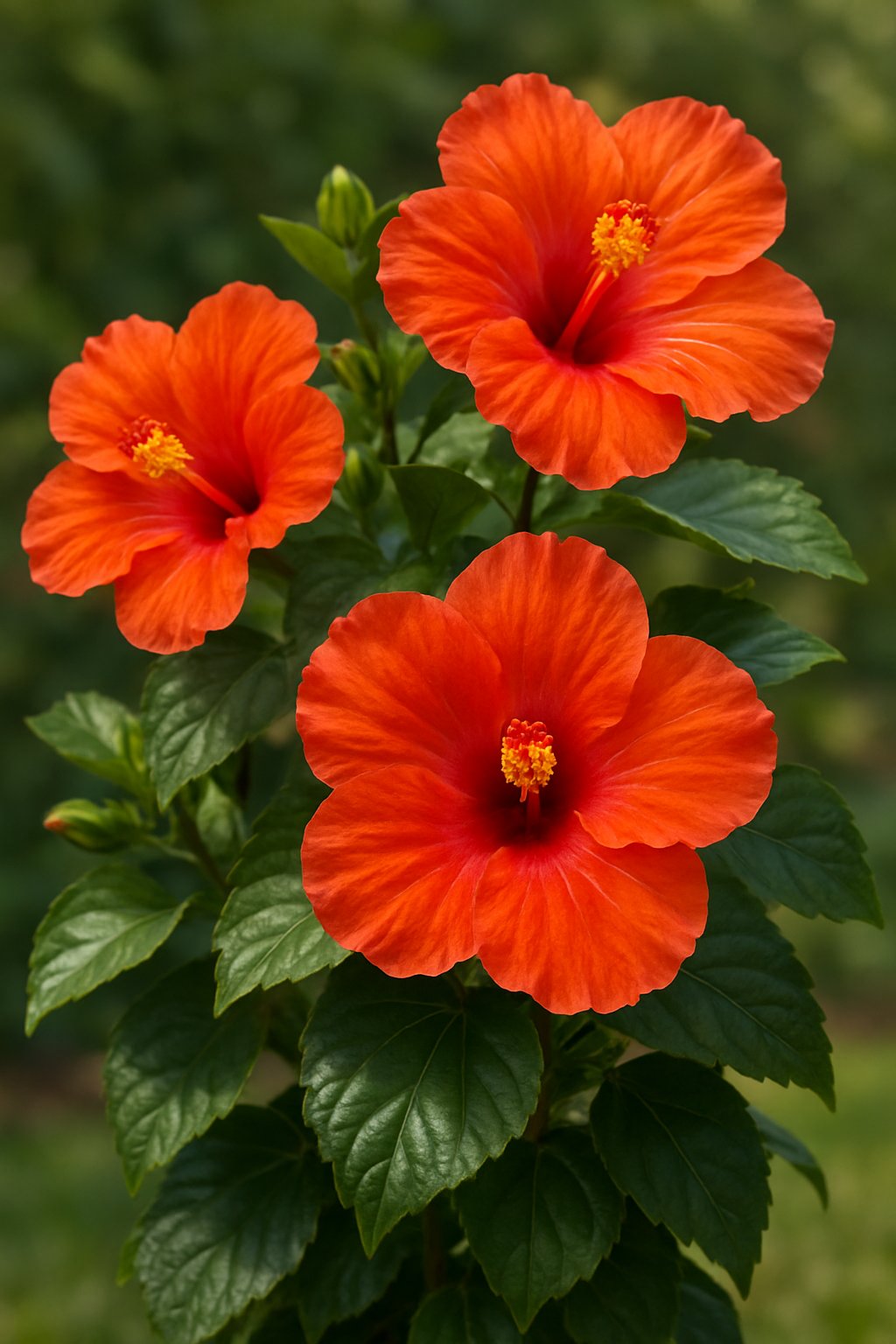
Hibiscus plants thrive in the Florida sun. They like full sun to partial shade with about 6-8 hours of direct sunlight each day. This helps them produce large, bright flowers.
You will need to water your hibiscus more often in hot months. Keep the soil moist but not soggy. Good drainage is important to avoid root problems.
Hibiscus bushes can grow quite tall, often reaching 24 to 28 inches or more. They add color and tropical vibes to your garden or patio.
Choose hardy or perennial varieties if you want flowers that come back year after year. These can have blooms up to 12 inches wide.
Expert Tip from MrPlanter: “Water hibiscus deeply during dry spells to keep flowers healthy. Prune lightly to shape your bush and encourage more blooms.”
6. Buttonwood

Buttonwood is a great choice if you want a tough tree that handles Florida’s sun and salty air. It grows well in sandy, well-drained soil and does not mind salty or brackish water. This makes it perfect for coastal yards or beachside gardens.
You can expect an evergreen tree that reaches about 20 feet tall. It has bright green leaves and small brown berries that add interest. You can find varieties like the Green Buttonwood and Silver Buttonwood, which offer slightly different looks.
Buttonwoods do well with regular watering but can handle some drought once established. Early pruning helps shape the tree and keeps it healthy. It thrives best in full sun, so plant it where it will get plenty of light.
Expert Tip from MrPlanter: “Water your Buttonwood regularly during the first year to help it settle. Prune early to create a strong, attractive shape that lasts.”
7. Carissa

Carissa is a tough shrub that grows well in Florida’s sun and salty air. It has dark, glossy leaves and small white flowers that bloom in spring. These flowers turn into purple fruits, which you can use to make jelly if wildlife doesn’t eat them first.
This plant can grow in full sun or light shade. It doesn’t need much water or fertilizer, making it easy to care for. Carissa also works well as a hedge or border plant.
It grows slowly but steadily and can handle dry spells and coastal conditions. You can plant it three to six feet apart for best results.
Expert Tip from MrPlanter: “Water Carissa deeply but less often to encourage strong roots. Prune lightly after flowering to keep a neat shape.”
8. Jatropha
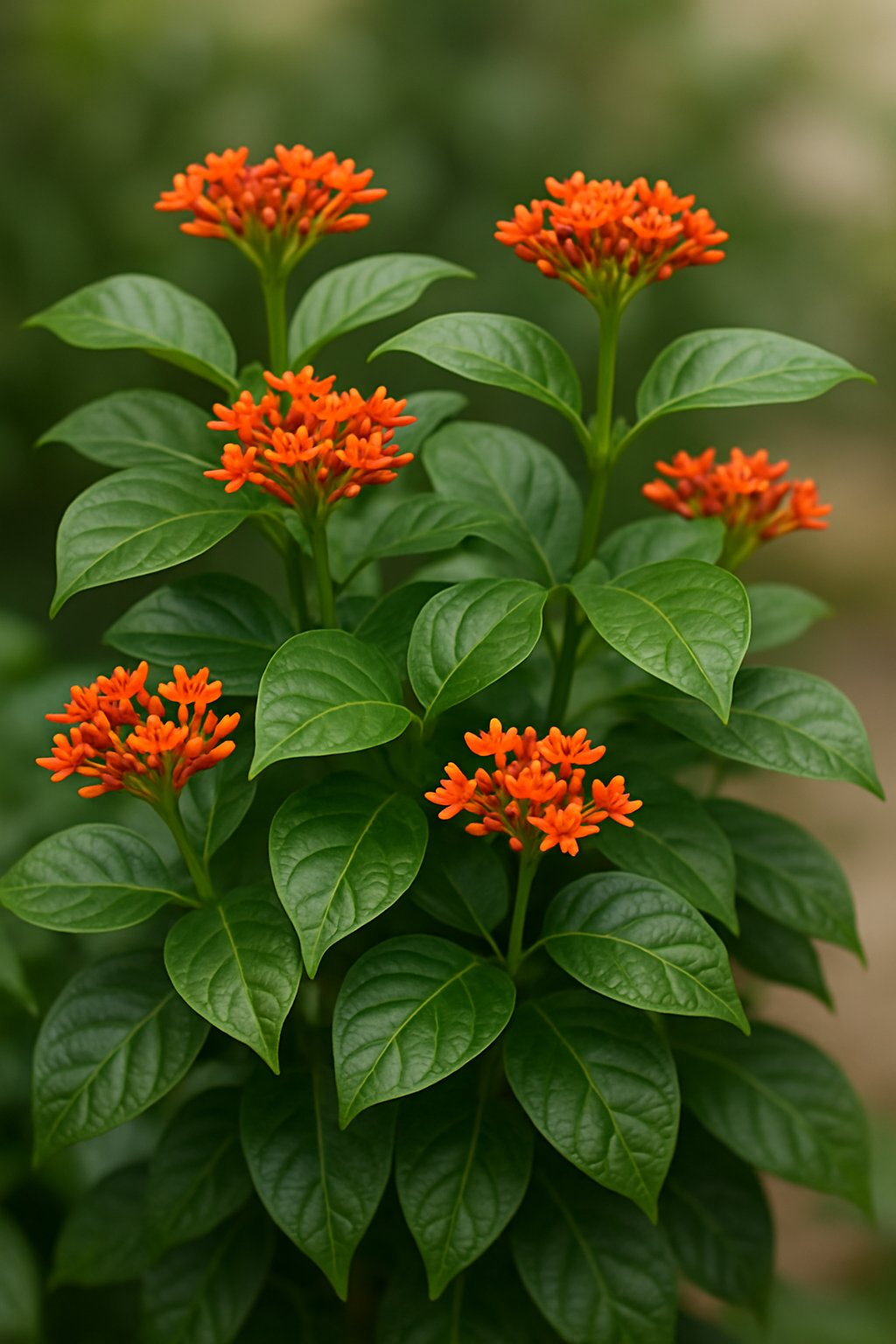
Jatropha is a small evergreen shrub or tree that grows well in Florida’s sun. It’s known for its bright red or pink flowers that attract butterflies and hummingbirds.
You should plant Jatropha in a spot with full sun and well-drained soil. It can handle some drought once it is established. It also does well in USDA zones 9b and above.
The leaves have a unique shape, making the plant stand out in your garden. While it can grow in partial shade, it flowers best when it gets plenty of sunlight.
Expert Tip from MrPlanter: “Water your Jatropha regularly when young, but reduce watering once it’s set. Prune lightly to keep it bushy and flowering.”
9. Bird of Paradise

Bird of Paradise is a great choice if you want a plant that adds a tropical feel to your garden. It has bright orange and blue flowers that look like a bird in flight, making it eye-catching. The plant also has strong, blue-green leaves that stay green all year.
This plant grows well in Florida’s warm sun and can handle dry spells once it is established. You can plant it in the ground or a large pot, but make sure it gets plenty of sunlight. It prefers well-drained soil and regular watering while growing.
Bird of Paradise can take a few years to bloom, but when it does, the flowers are worth the wait. They make a fun, colorful addition to any outdoor space.
Expert Tip from MrPlanter: “Give your Bird of Paradise some room to grow by planting it at least 3 feet away from other plants. Water deeply but let the soil dry out between watering to keep the roots healthy.”
10. Crown of Thorns
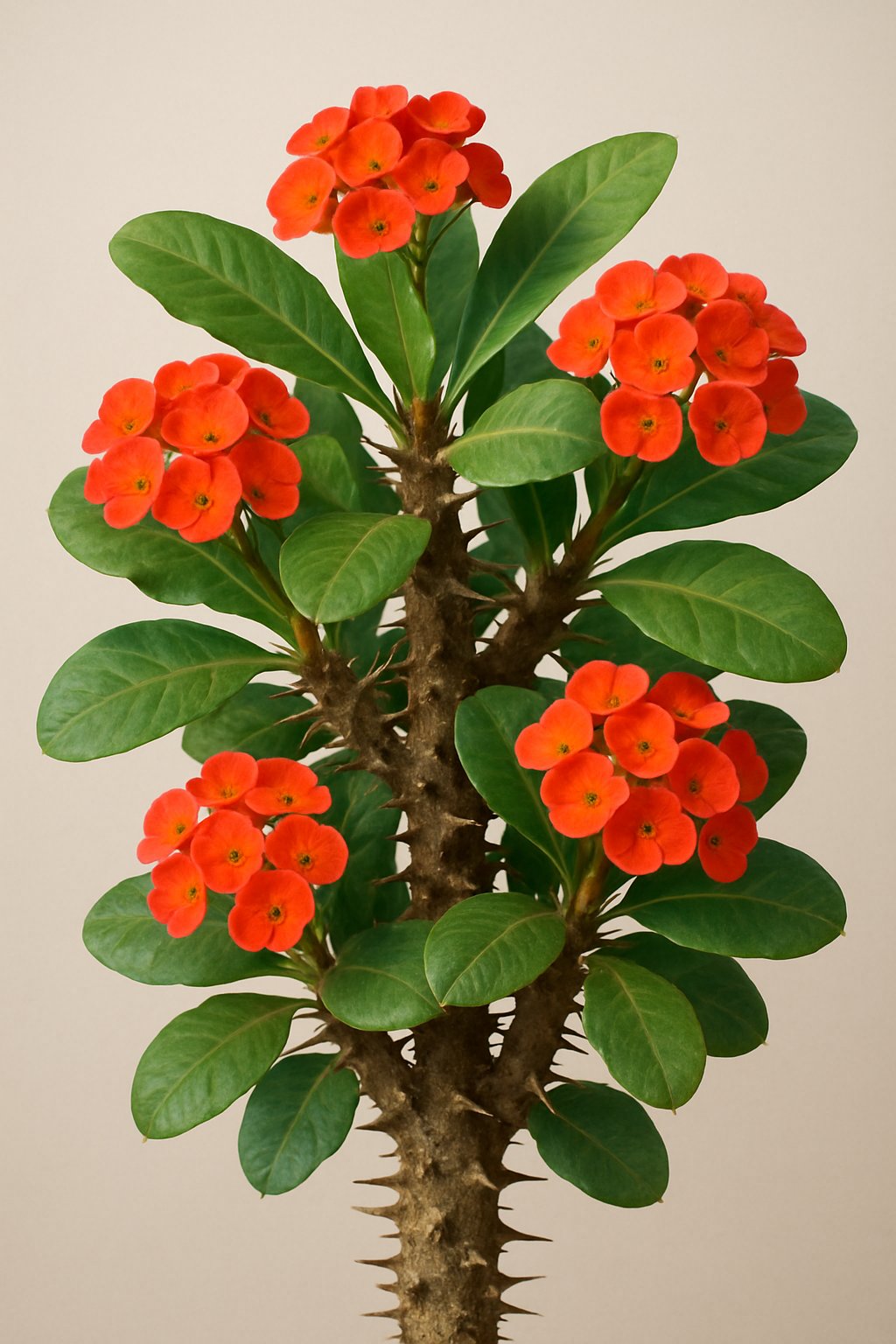
Crown of Thorns is a great choice if you want a tough, sunny plant. It loves full sun and blooms best when it gets at least three to four hours of direct sunlight each day.
This plant is drought-tolerant, so you don’t need to water it often once it’s established. Just watch out for cold weather; it doesn’t like frost.
It can grow between 2 to 3 feet tall and adds color with its long-lasting flowers. You can even grow it indoors if it gets enough light.
Crown of Thorns works well in low-water gardens and places near the coast because it handles salty air.
Expert Tip from MrPlanter: “Water your Crown of Thorns only when the soil feels dry. Protect it from frost by bringing it inside or covering it during cold spells.”
11. Desert Rose (Adenium)
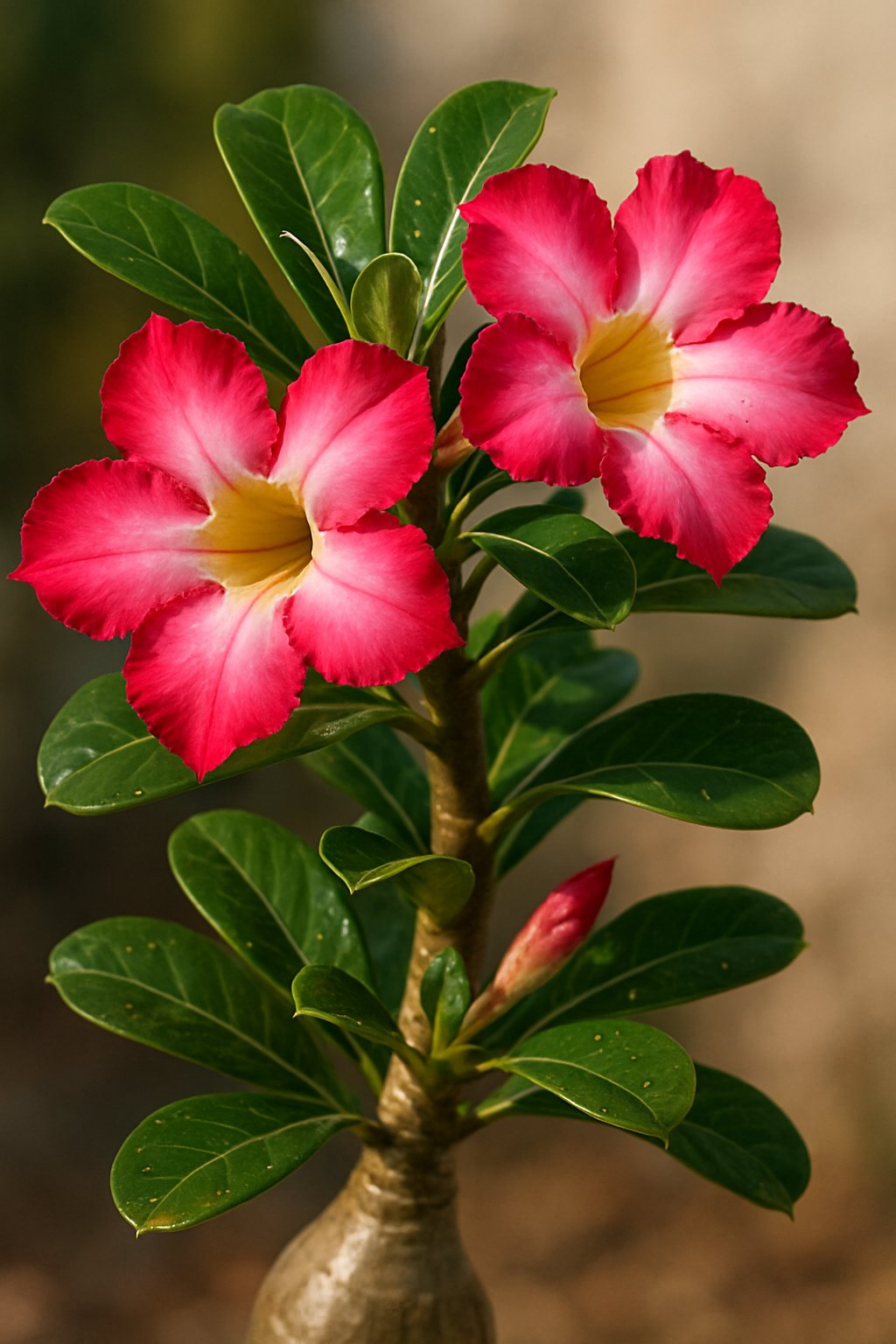
The Desert Rose is a sun-loving plant that thrives in bright light. You should place it where it gets plenty of direct or indirect sunlight, ideally near a south- or west-facing window if grown indoors.
It is slow-growing and low-maintenance, making it a good choice for beginners. Just remember to water it well during hot weather, but avoid overwatering.
This plant can be grown in containers or in the garden. If temperatures drop, bring it indoors to protect it from the cold.
Its thick, interesting shape and pretty flowers make it a striking addition to your collection.
Expert Tip from MrPlanter: “Give your Desert Rose at least 4-6 hours of sunlight daily for strong growth. Water only when the top inch of soil feels dry to avoid root rot.”
12. Florida Privet (Forestiera segregate)
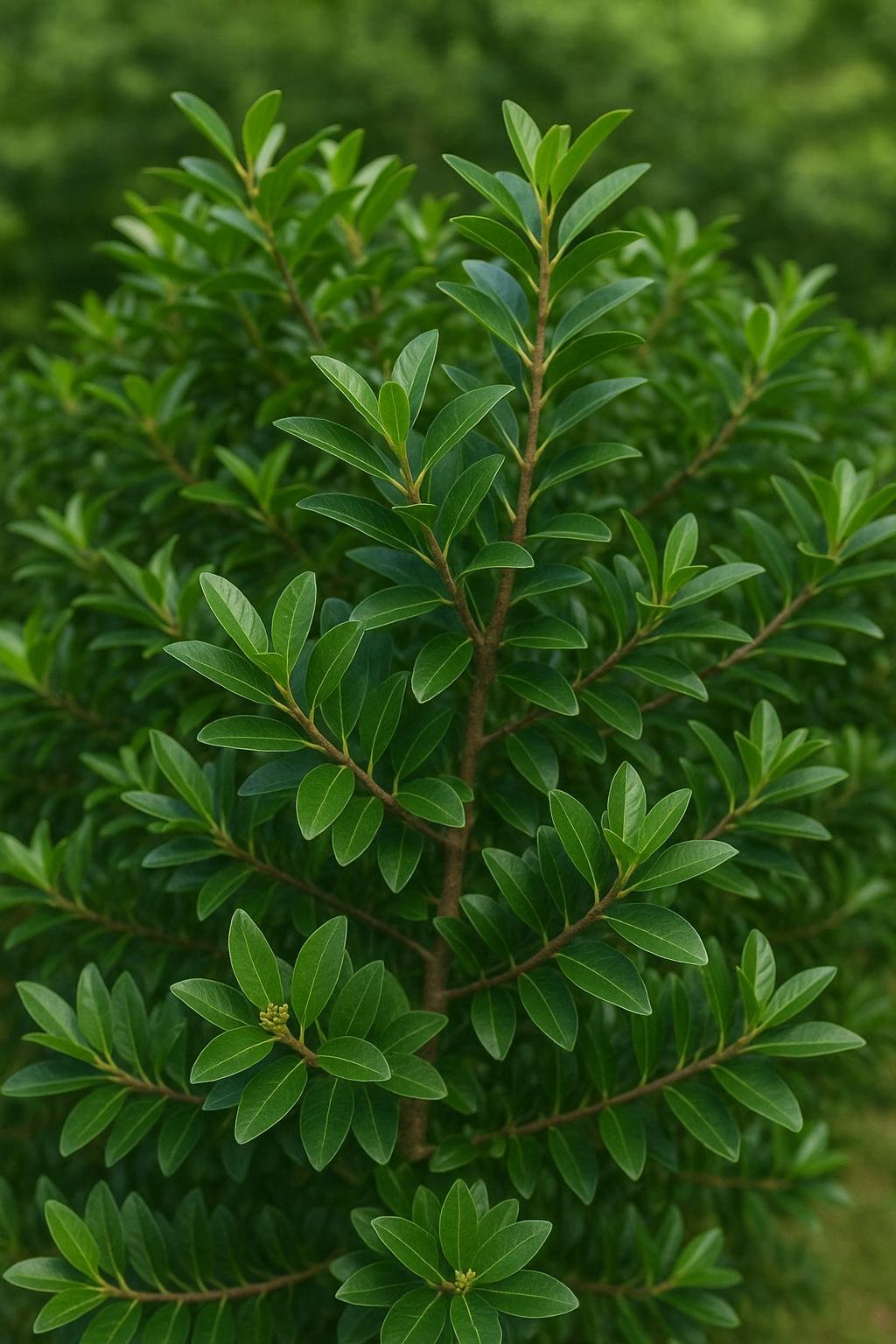
Florida Privet is a small tree or shrub that grows between 10 and 15 feet tall. It has dense, evergreen leaves that stay green most of the year. This plant does well in full sun to light shade.
It is very tough and handles dry soil and salt spray well. You can plant it near the coast or in sandy soil without worry. The tree flowers with small green to yellow blooms that attract pollinators.
After flowering, it produces dark blue or purple berries. These berries provide food for birds, making them a good choice to support wildlife in your garden. The broad shape also makes it great for privacy or a natural screen.
Florida Privet is easy to prune and maintain, and its drought tolerance makes it perfect for Florida’s hot climate.
Expert Tip From MrPlanter: “Prune Florida Privet lightly in early spring to keep its shape and encourage new growth. Water it well the first few months after planting to help it get established.”
13. Firecracker Plant
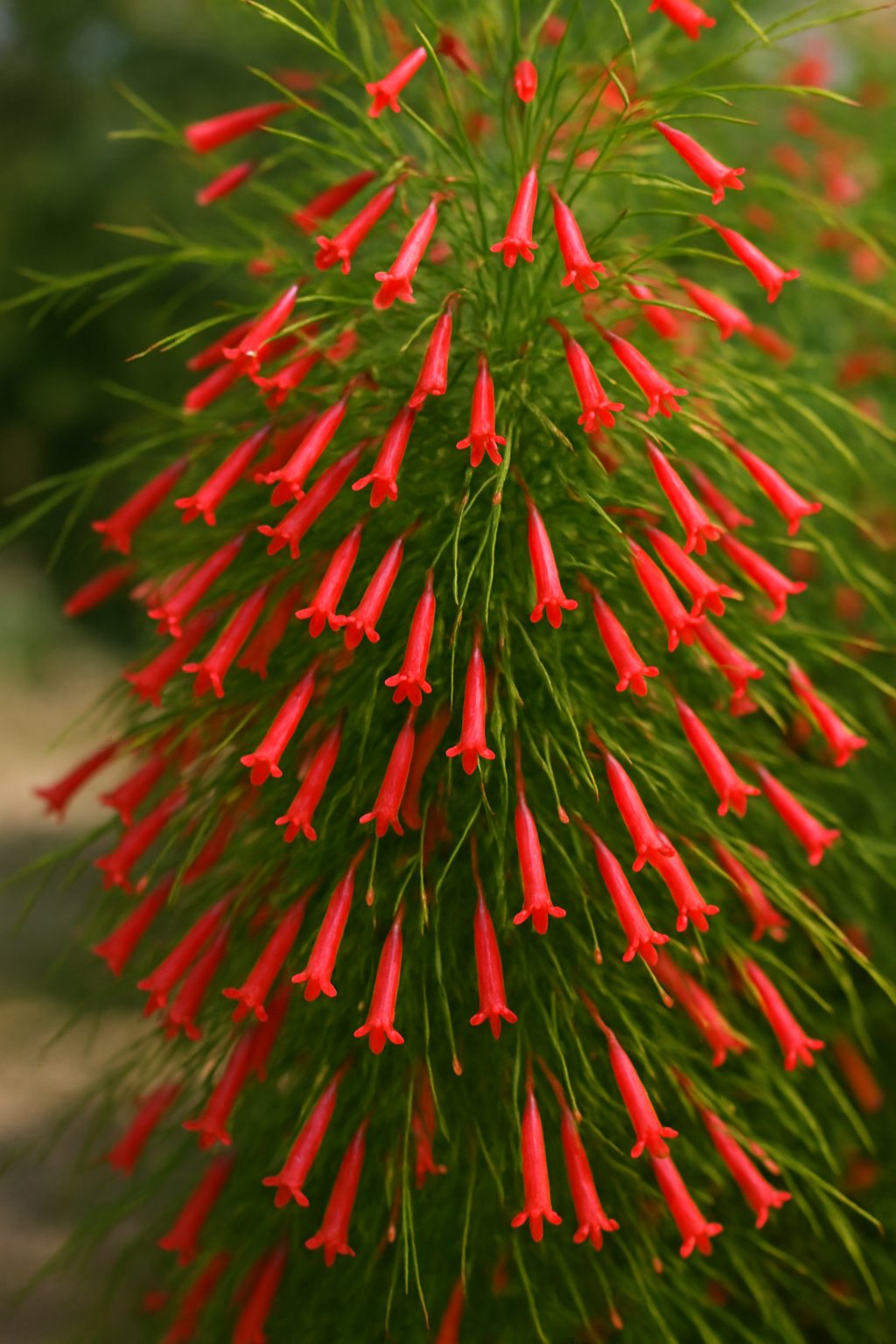
The Firecracker Plant is a bright and colorful shrub that grows well in Florida’s warm climate. It usually reaches 3 to 5 feet tall and wide. You’ll see lots of red tubular flowers, but yellow and salmon colors are also available.
This plant blooms most of the year, especially in full sun. If you put it in partial sun, it might still grow but produce fewer flowers. It prefers mild, frost-free areas and needs well-drained soil.
The Firecracker Plant is evergreen, so it keeps its green leaves year-round. Its long, thin branches give it a unique, somewhat weeping shape.
Expert Tip from MrPlanter: “Place your Firecracker Plant in a spot with direct sunlight for the best blooms. Water it regularly, but avoid soggy soil to keep roots healthy.”
14. Dwarf Poinciana (Caesalpinia pulcherrima)
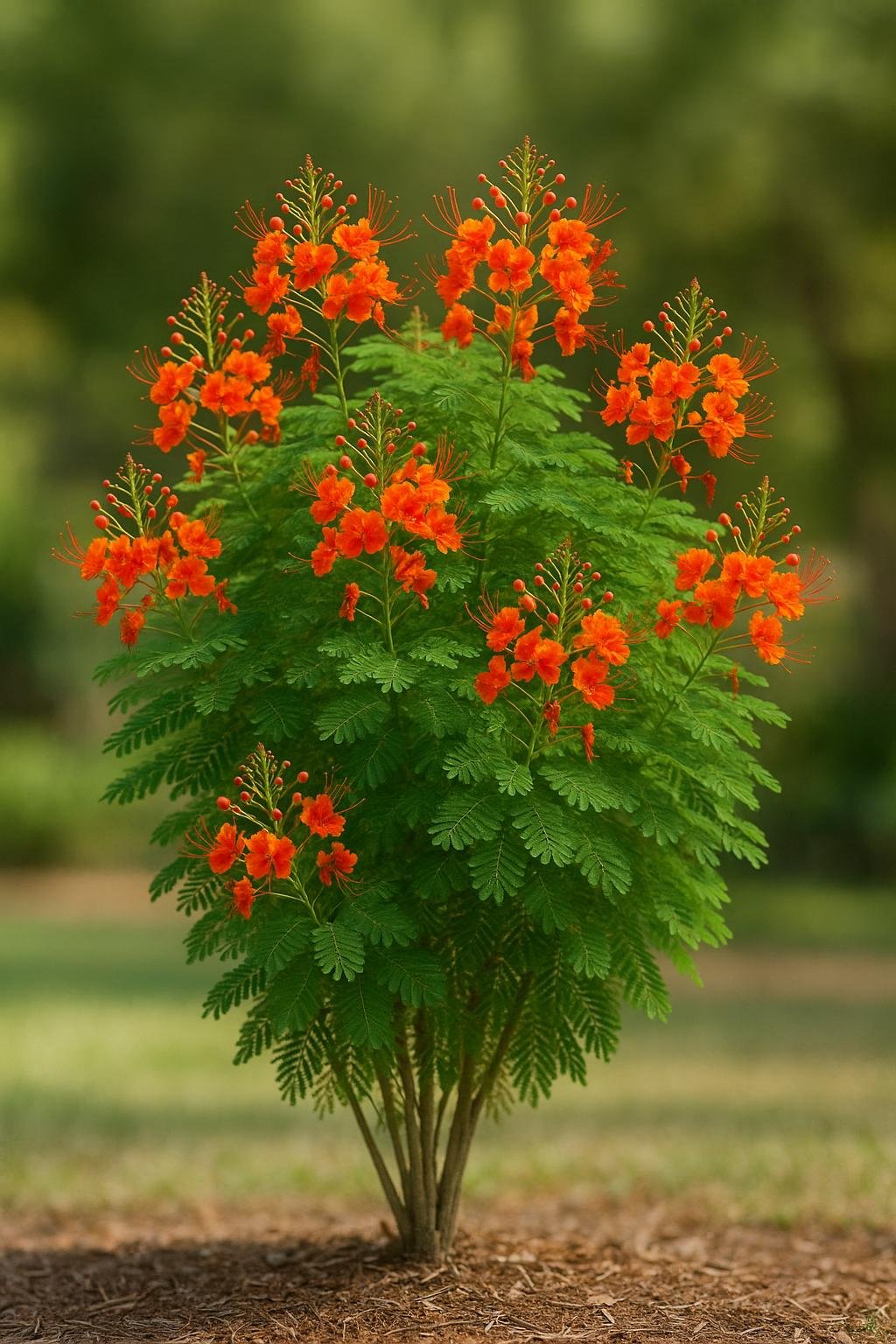
The Dwarf Poinciana is a small tree or large shrub that loves the sun. It grows fast and can reach 10 to 12 feet tall, but you can keep it trimmed to 6 to 8 feet. This plant works well in warm climates like South Florida (Zone 10).
You’ll enjoy bright, colorful flowers most of the year if it stays warm. The Dwarf Poinciana is also known as Pride of Barbados or Peacock Flower. It adds a tropical feel to your garden and is good for small spaces.
This plant is tough in heat and drought, but doesn’t like frost. It attracts butterflies and birds, making your yard lively. Regular watering helps it look its best, especially in dry times.
Expert Tip from MrPlanter: “Trim your Dwarf Poinciana early in spring to keep its shape neat. Use mulch around the base to keep roots cool and moist.”
15. Muhly Grass
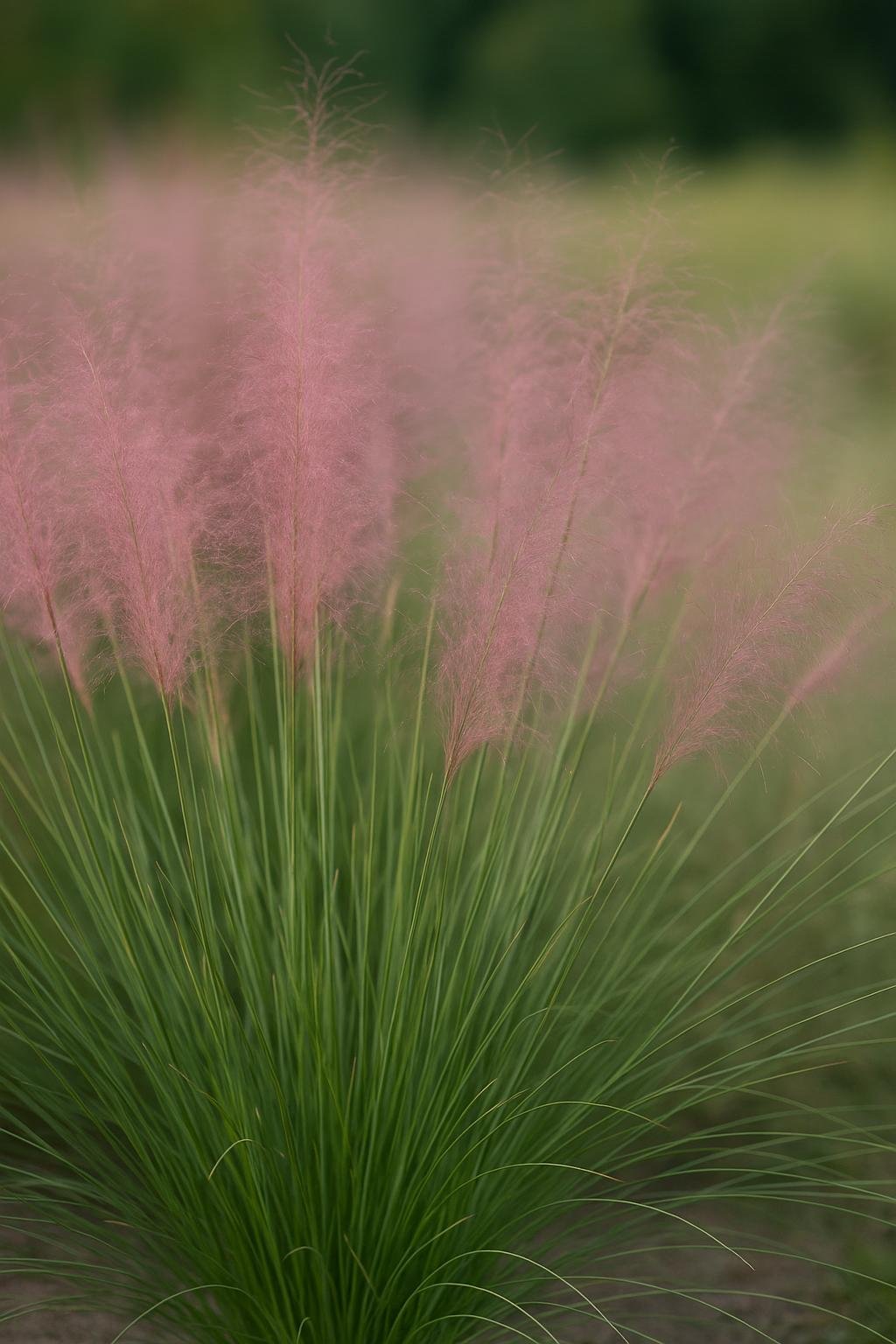
Muhly Grass is a great choice if you want a low-maintenance, sun-loving plant. It grows well in full sun and can handle Florida’s heat, humidity, and even salt spray near the coast. You can space the plants about 2 to 3 feet apart for the best effect.
This grass grows in thick clumps and can reach up to 4 feet tall. It produces beautiful pink or purple, fluffy flower heads in the fall that add color to your garden. Muhly Grass also spreads by seeds, so it can fill in spaces over time.
It works well as a standalone plant or in groups for mass plantings. It’s commonly used in landscaping around golf courses and rain gardens because it needs little water once established.
Expert Tip from MrPlanter: “Plant Muhly Grass where it gets several hours of sunlight daily for the healthiest growth. Trim it back in late winter to encourage fresh new growth in spring.”
16. Plumeria
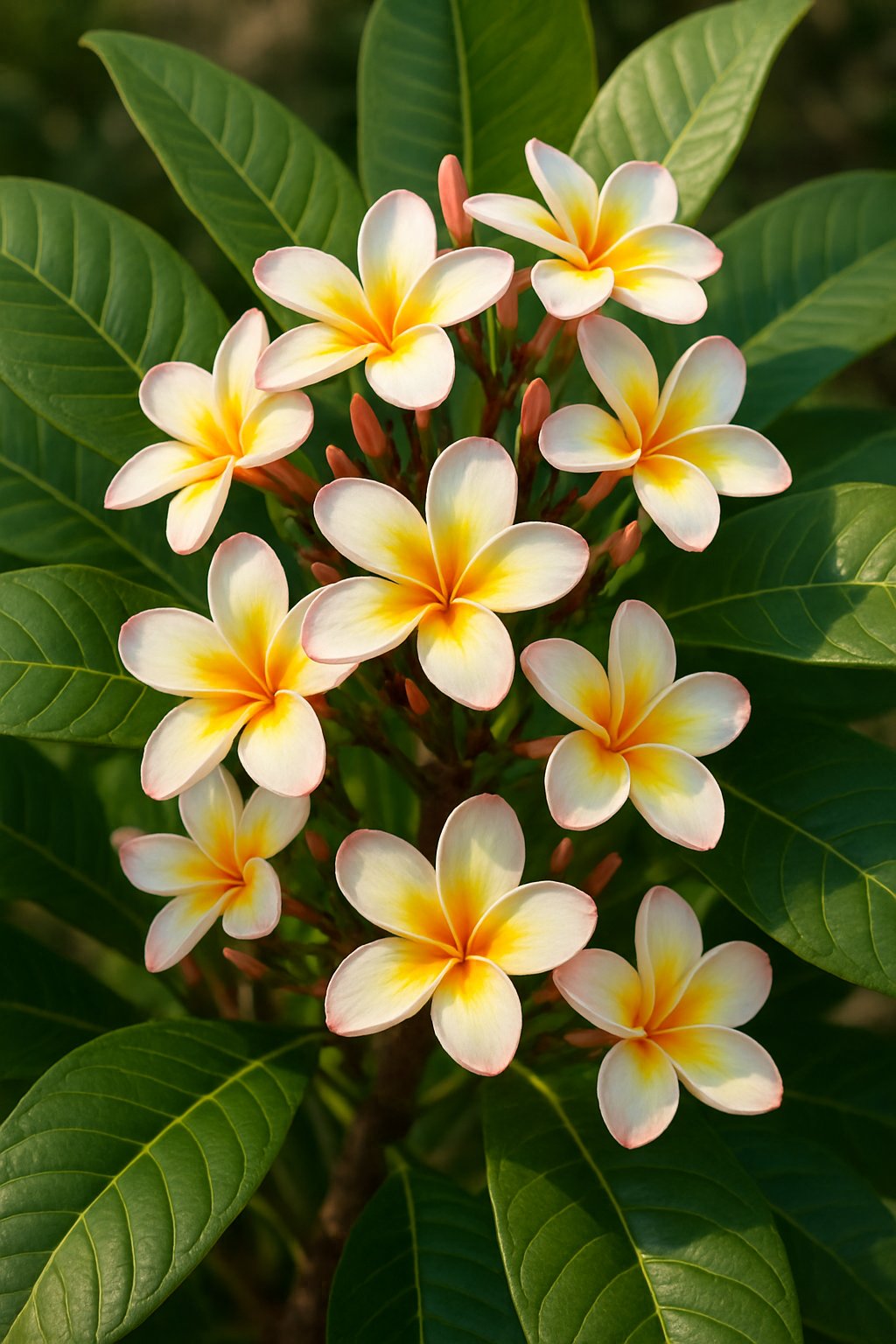
Plumeria is a great choice if you want bright, colorful flowers in your Florida garden. It grows best in full sun and well-drained soil. Once established, plumeria plants can handle drought and salty air.
You’ll see large, fragrant flowers that are often pink with yellow centers. These plants are fairly low-maintenance but need space to grow. Avoid overwatering, especially in wet seasons.
Plumeria can brighten patios or small gardens with their tropical look. They also attract pollinators like butterflies to your yard.
Expert Tip from MrPlanter: “Plant your plumeria where it gets full sun all day for the best blooms. Let the soil dry out between waterings to prevent root rot.”
17. Pentas
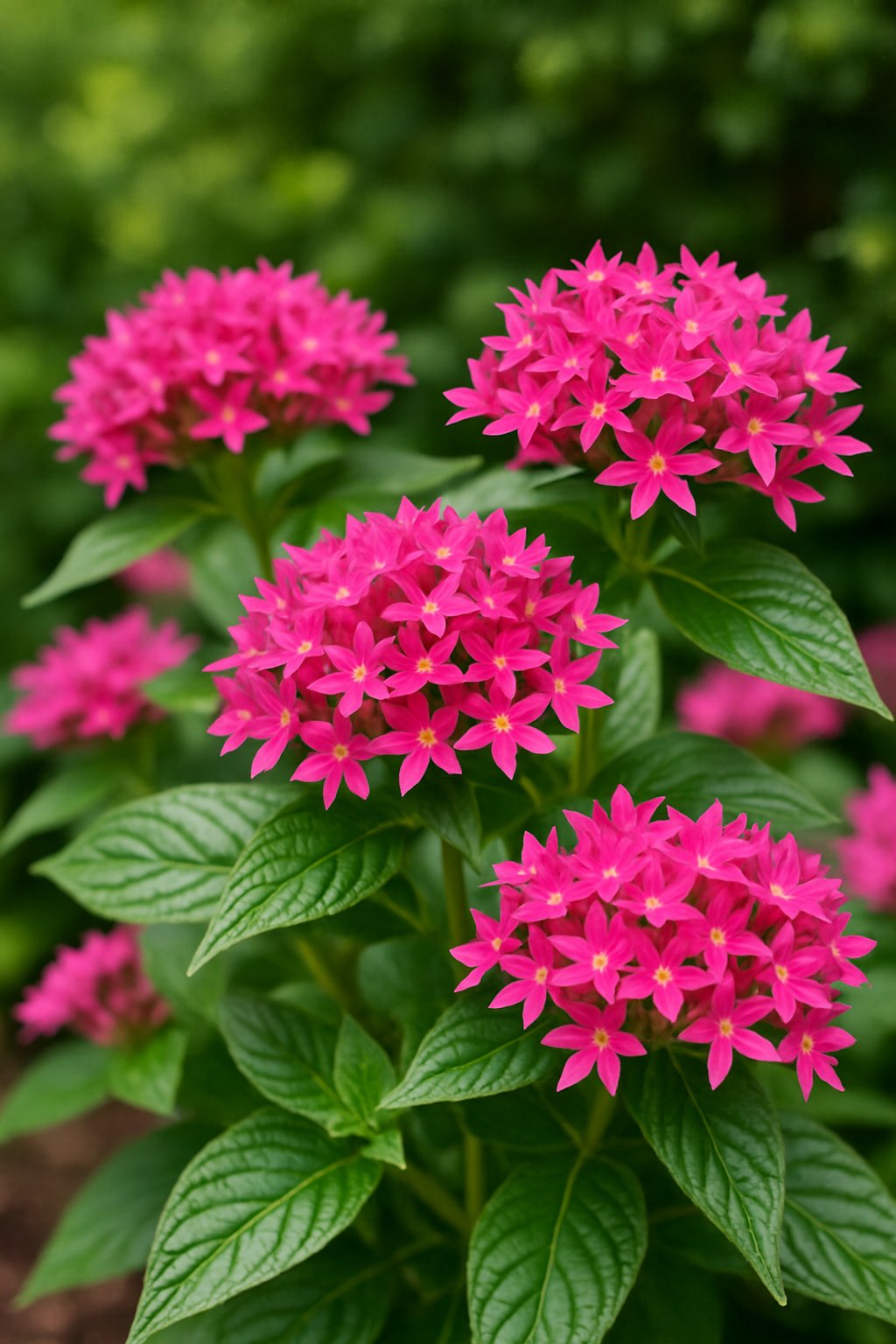
Pentas are colorful plants that bloom in red, pink, or white. They bring bright pops of color to your garden all summer long.
These plants love heat and humidity, making them perfect for Florida’s climate. You can grow them in full sun or partial shade.
Pentas attract butterflies and hummingbirds, adding life to your outdoor space. Plant them in well-drained soil and leave about 18 to 24 inches between each one for enough room to grow.
They do best in USDA Zones 10-11, so they thrive in the warmest parts of Florida.
Expert Tip from MrPlanter: “Water Pentas regularly but avoid soggy soil to keep roots healthy. Pinch off spent flowers to encourage more blooming.”
18. Vinca
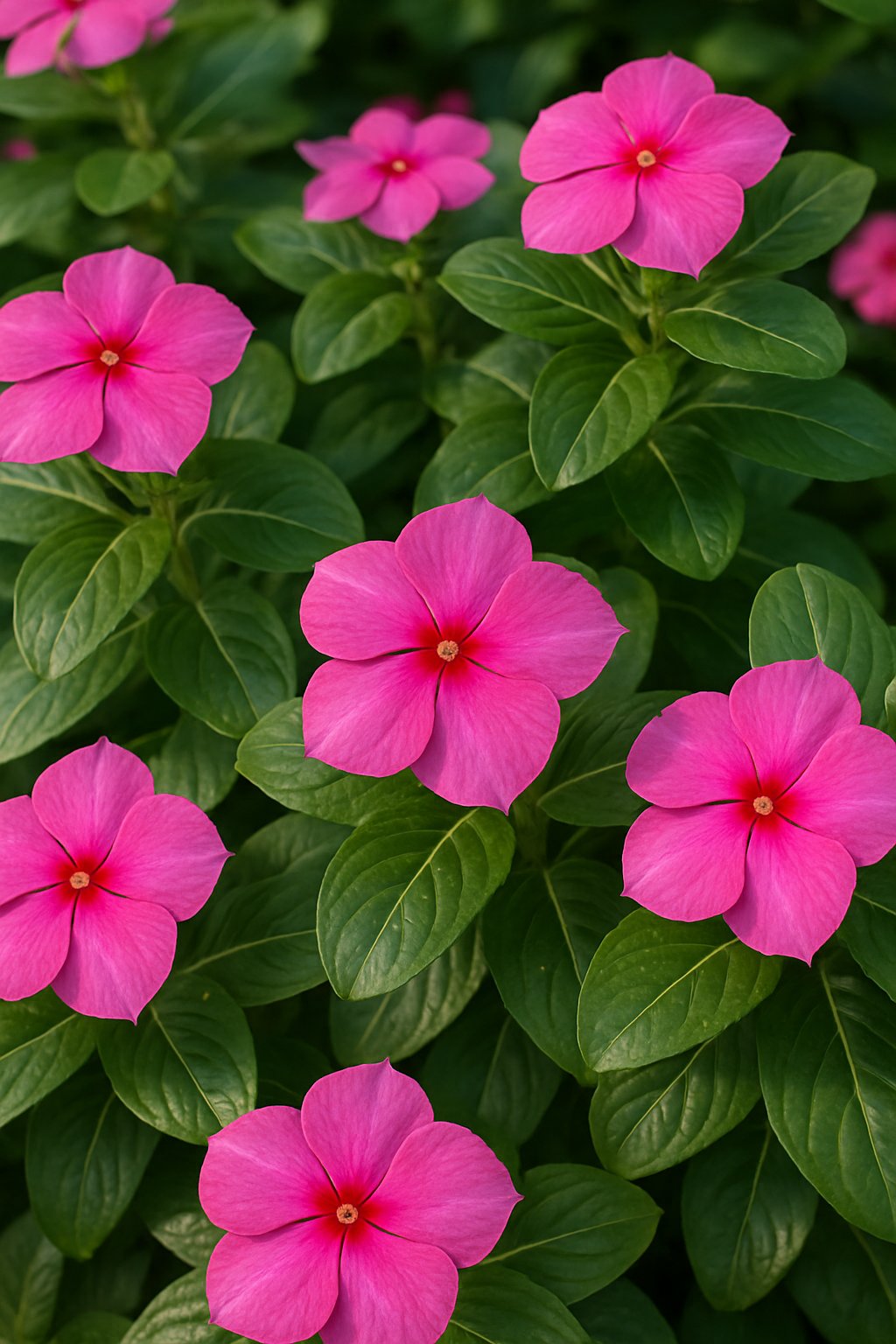
Vinca, also called Madagascar periwinkle, is great for Florida’s hot sun. It grows low, about 6 to 24 inches tall, and spreads wide, making it perfect as ground cover.
You can plant vinca in full sun to partial shade. It handles heat and humidity well, so it flowers all summer long without much trouble.
Vinca is disease-resistant and needs little care. Just trim it now and then to keep it neat and encourage more blooms.
It’s not native to Florida but adapts quickly to local conditions, making your garden look bright and healthy during the warmer months.
Expert Tip from MrPlanter: “Plant vinca with 12 to 24 inches between each for best growth. Trim regularly to avoid overcrowding and keep flowers blooming.”
19. Simpson’s Stopper (Myrcianthes fragrans)
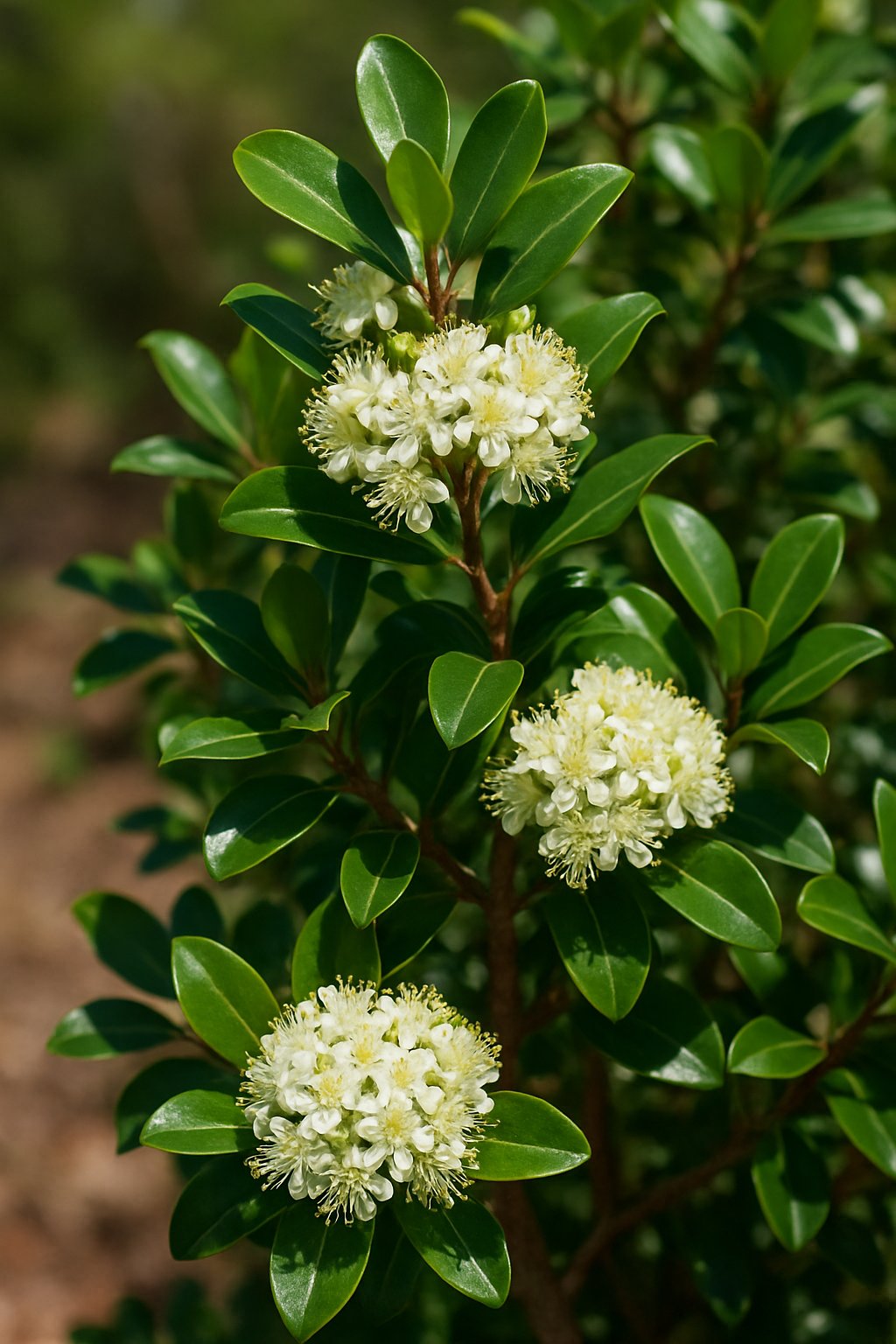
Simpson’s Stopper is a small evergreen tree native to Florida. It can grow up to 15 feet tall and works well in many parts of your garden.
You’ll notice white, fragrant flowers in spring and early summer. These flowers turn into bright orange-yellow berries that birds love.
This plant tolerates dry to moist soils and can grow in full sun or shade. It handles salt and alkaline soil well, making it good for coastal areas.
Simpson’s Stopper grows slowly, so it won’t take over your space. You can prune it to keep the shape you want.
Expert Tip from MrPlanter: “Plant Simpson’s Stopper where birds can enjoy the berries. Prune lightly after flowering to keep it neat.”
20. Allamanda Vine
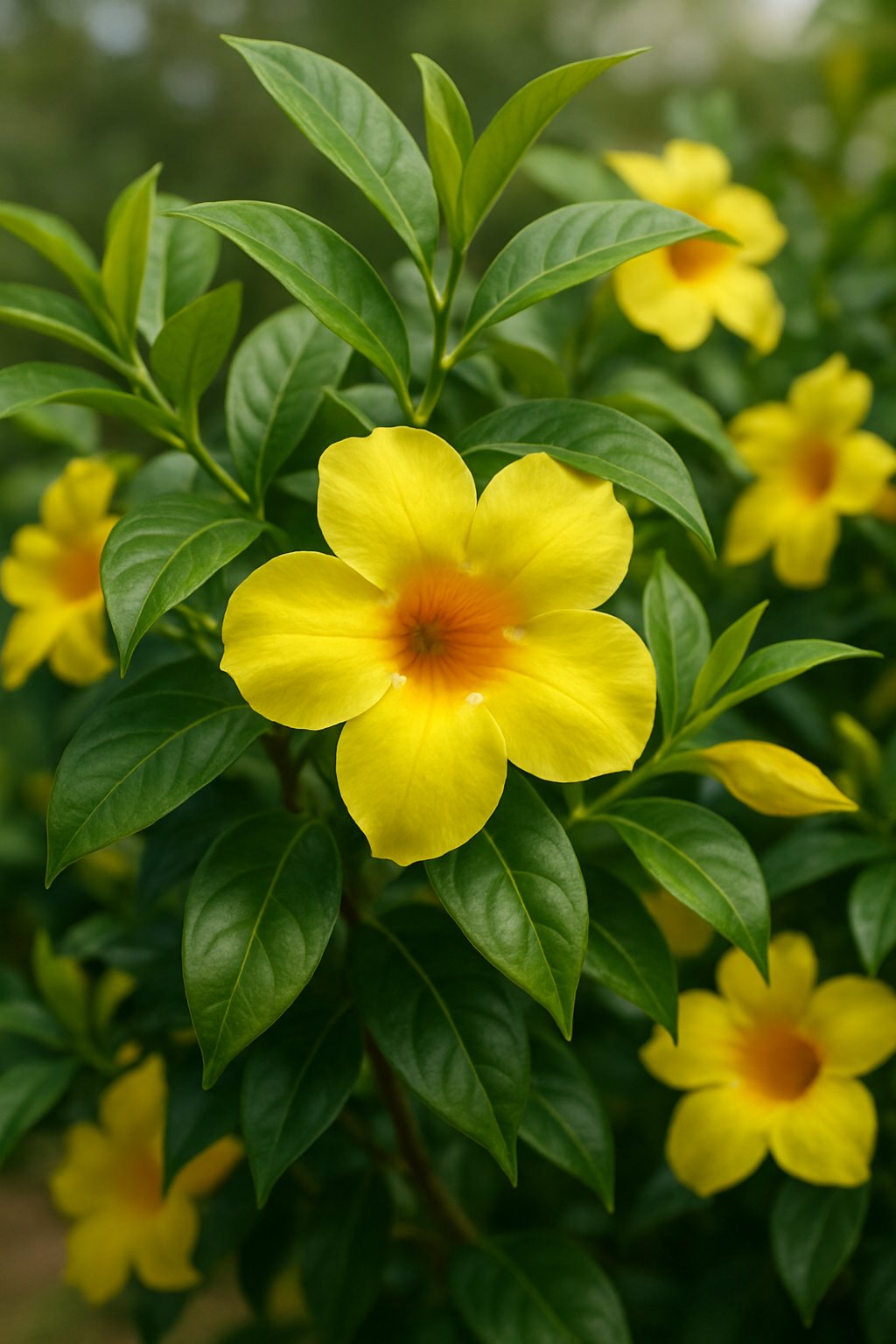
The Allamanda vine loves full sun. Make sure it gets at least 4 to 6 hours of direct sunlight each day to help it bloom well.
This plant thrives in warm, humid climates like Florida’s. It can grow over 10 feet tall, so give it plenty of space or support to climb.
Water it regularly, but avoid soggy soil. The Allamanda does best with soil that drains well.
You can prune the vine to control its size. It adapts easily to your garden and grows quickly under the right conditions.
Expert Tip from MrPlanter: “Plant Allamanda near a fence or trellis for easy support. Trim yearly to keep it healthy and flowering.”
21. Texas Sage (Leucophyllum frutescens)
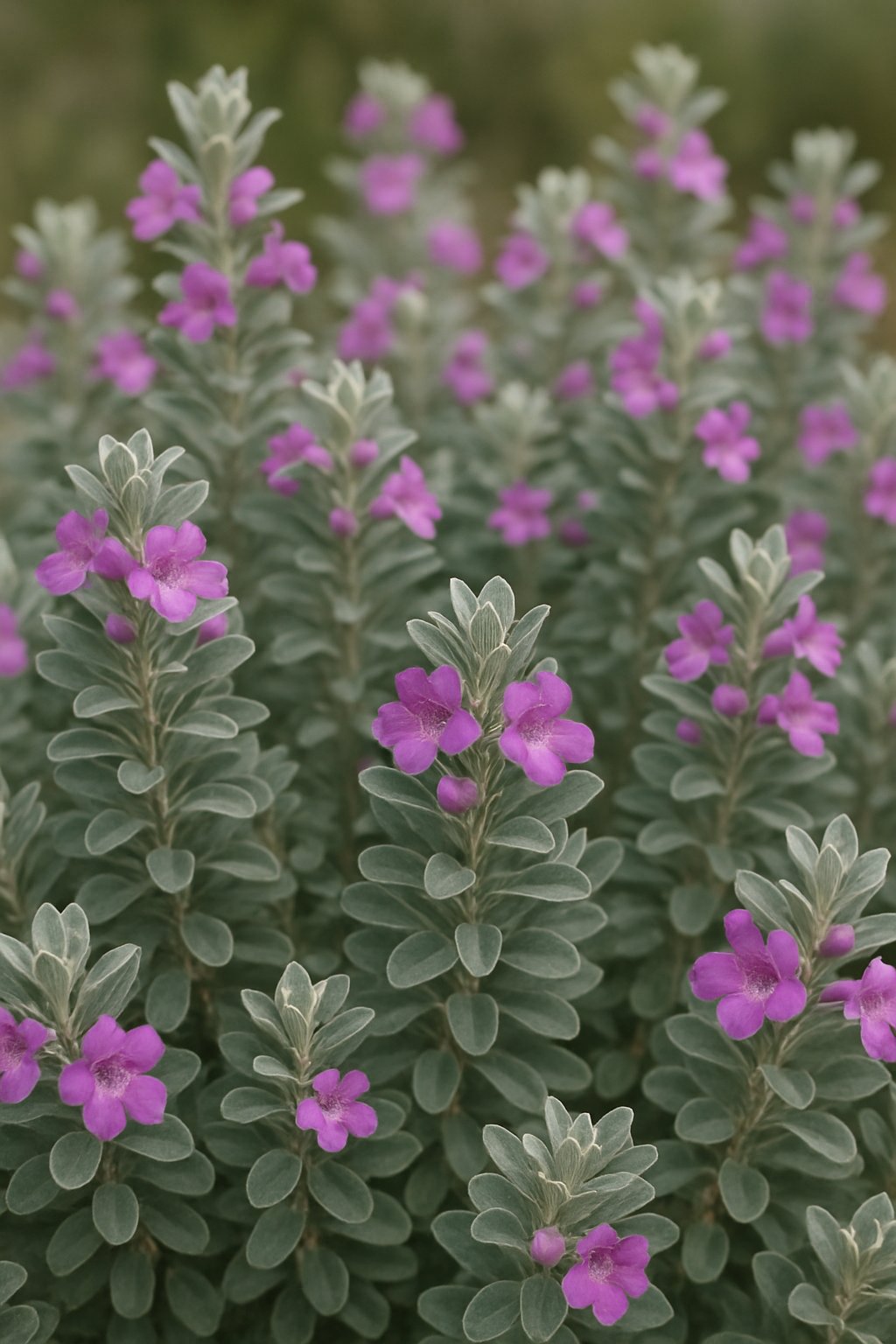
Texas Sage is a tough, evergreen shrub that does well in hot, sunny spots. It has silvery leaves and purple flowers that bloom after rain. You can count on it to handle drought once it’s settled.
This plant grows up to 6 feet tall and wide, making it good for borders or a low hedge. It likes full sun but can handle some shade. Texas Sage doesn’t need much care and tolerates rocky or poor soil.
It also stands up well to salty air if you live near the coast. Water it only when the soil is dry, and it will stay healthy without much fuss.
Expert Tip from MrPlanter: “Plant Texas Sage where it gets plenty of sun for best blooms. Let the soil dry out between watering to keep it happy and thriving.”
22. Jessamine
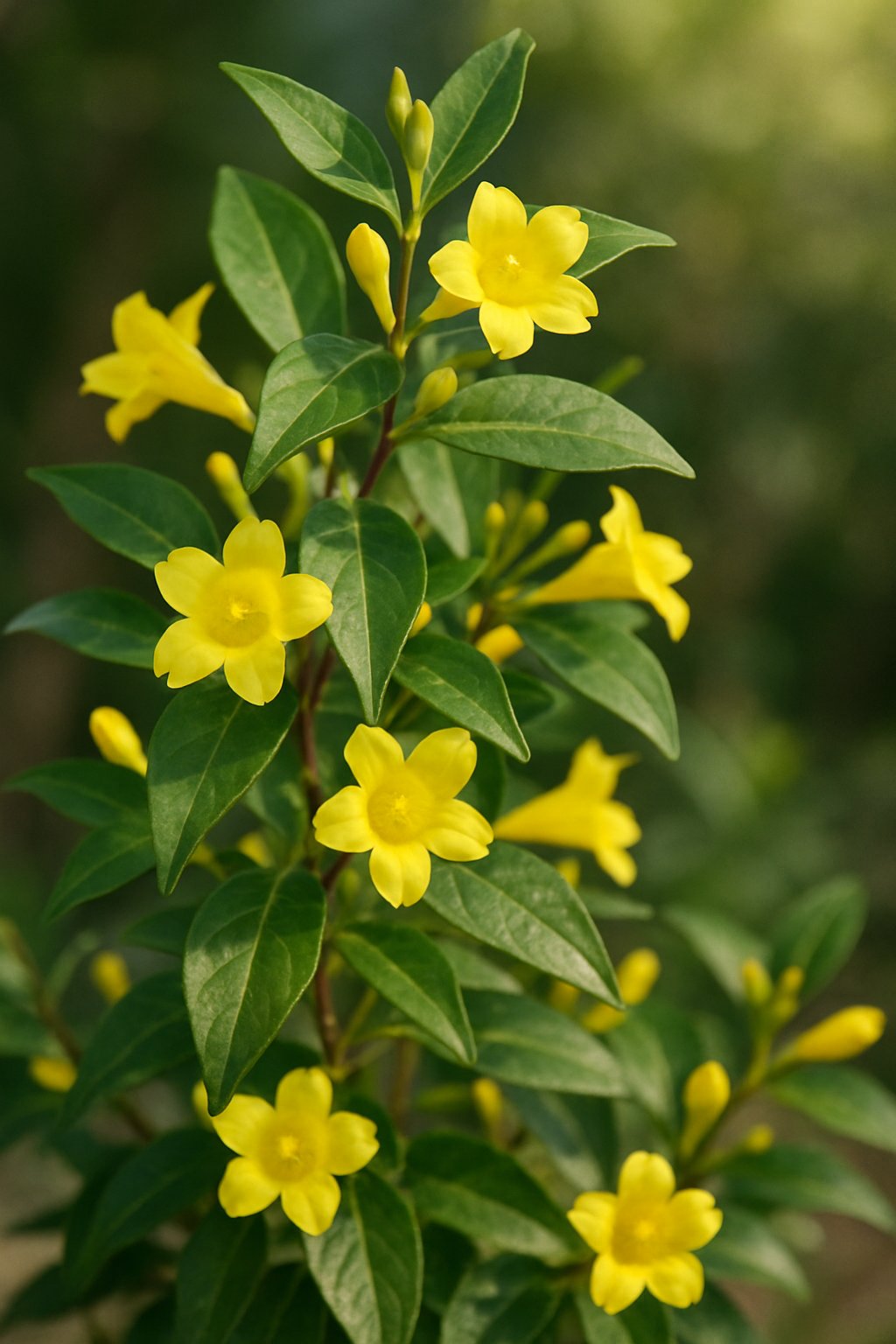
Jessamine is a bright yellow flowering vine that does well in full sun. It stays bushy when it gets plenty of light, but will climb trees or supports if in shade.
This evergreen plant produces trumpet-shaped flowers that smell nice and attract pollinators. It grows up to 10 to 20 feet tall with thin, twining stems.
You can use Jessamine on trellises, fences, or as ground cover. It’s low maintenance and keeps its green leaves all year.
Be careful, though—every part of Jessamine is toxic if eaten. Keep it away from kids and pets.
Expert Tip from MrPlanter: “Plant Jessamine where it can climb safely and get lots of sun for best blooms. Always wear gloves when handling it to avoid skin irritation.”
23. Blanket Flower (Gaillardia)
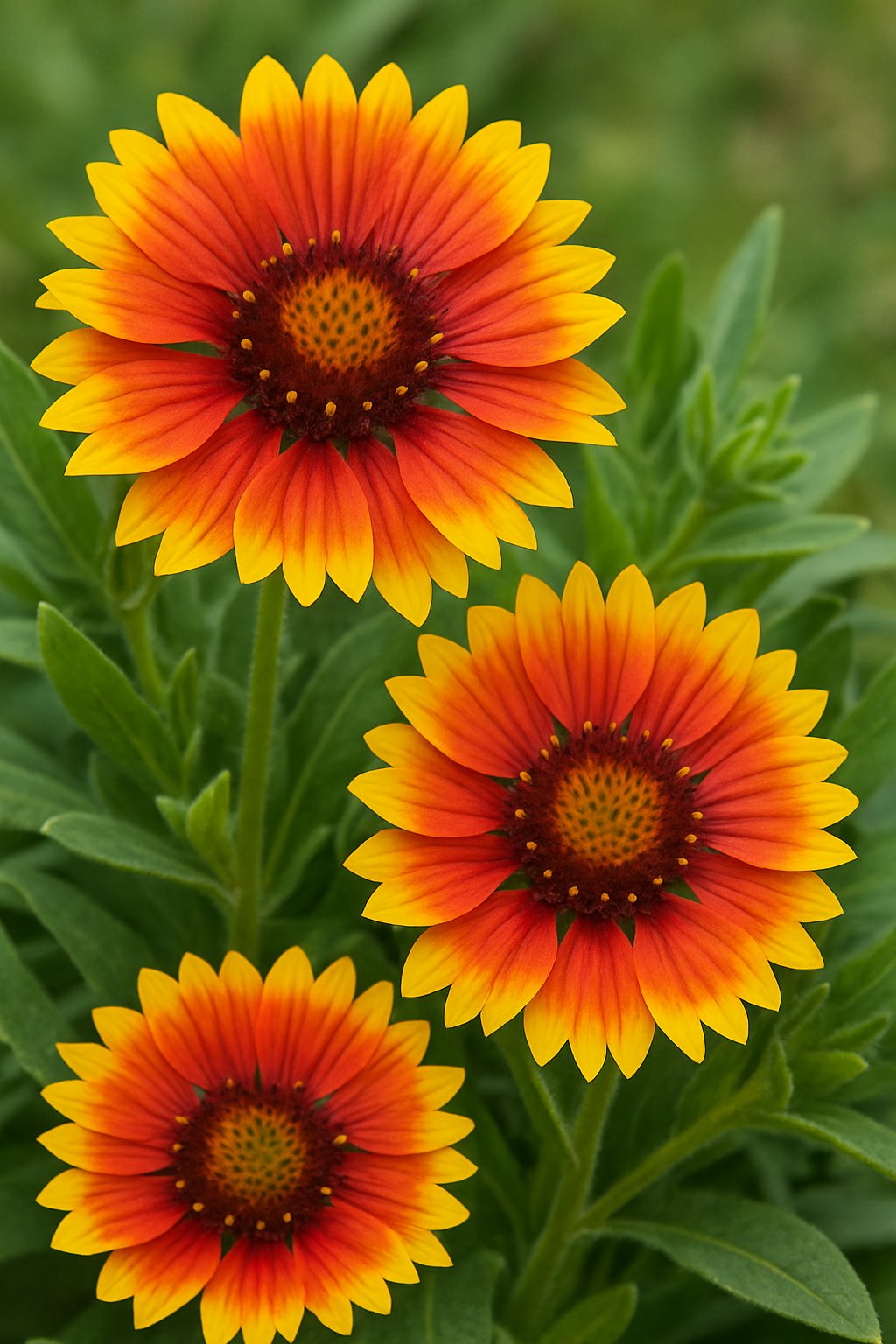
Blanket flowers are great if you want bright blooms that love the sun. They grow well in sandy, well-drained soil, which makes them perfect for Florida’s beaches and dry areas.
You don’t need to water them too much. They do better if you let the soil dry out between waterings.
They bloom from spring through summer and sometimes even longer. These flowers can spread on their own, so you might see new plants popping up in your garden.
They work well with other heat-loving plants. Blanket flowers add a splash of color and require very little care once established.
Expert Tip from MrPlanter: “Plant blanket flowers in full sun and avoid overwatering. They thrive best in dry conditions, so less water usually means happier plants.”
24. Lantana
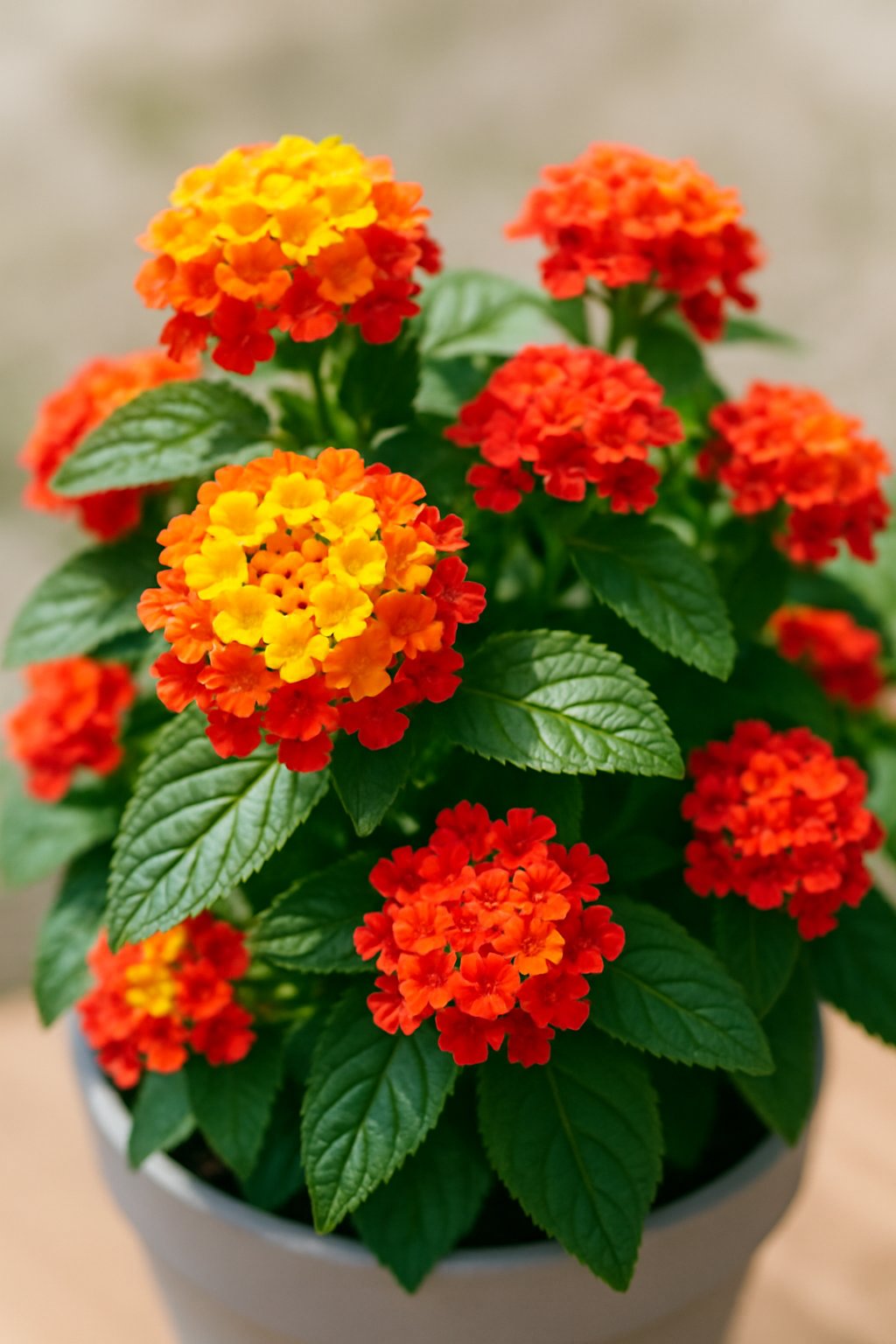
Lantana is a bright, colorful plant that thrives in full sun. It needs at least six hours of direct sunlight each day to grow well. You can expect lantana to reach about 2 to 3 feet tall and wide.
This plant produces flowers in shades of yellow, orange, red, and pink. It attracts butterflies and adds a lively touch to your garden. Lantana is also known for its good salt tolerance, making it great for coastal areas.
In colder climates, treat lantana as an annual. In warmer zones, it grows back as a perennial. It doesn’t usually attract deer, which helps keep it safe.
Expert Tip from MrPlanter: “Water young plants regularly, but once established, lantana can handle dry spells. Prune lightly to keep it bushy and blooming longer.”
Important Planting Considerations
Florida-Friendly Landscaping Principles
Consider incorporating these plants as part of the Florida-Friendly Landscaping program, which promotes sustainable landscaping practices that conserve water and reduce environmental impact.
Right Plant, Right Place
Even among full sun plants, match specific varieties to your exact microclimate, soil conditions, and available space to reduce maintenance and resource requirements.
Native vs. Non-Native Selection
The list includes both native plants (Simpson’s Stopper, Muhly Grass, Firebush) and non-natives.
Native plants typically require less water and fertilizer once established and better support local wildlife.
Watering Zones
Group plants with similar water requirements together to avoid over or under-watering, creating efficient irrigation zones in your landscape.
Salt Tolerance
For coastal properties, note that Buttonwood, Simpson’s Stopper, and Texas Sage offer excellent salt tolerance for beachside gardens.
Wildlife Benefits
Many plants on this list (Pentas, Firebush, Lantana) attract pollinators. Consider this when planning your garden to support local ecosystems.
Seasonal Care Calendar
- Spring (March-May): Apply fertilizer, prune winter damage, divide overgrown perennials
- Summer (June-August): Monitor for heat stress, maintain mulch layer, watch for pest increases
- Fall (September-November): Light pruning, prepare for cooler months, final fertilization
- Winter (December-February): Protect sensitive varieties during cold snaps, reduce watering
These additions provide essential practical information to help Florida gardeners successfully grow and maintain the full sun plants on your list.
FAQs About Florida Full Sun Plants
Q1. What exactly is “full sun” in gardening terms?
A: Full sun in Florida means 6+ hours of direct sunlight daily. However, some plants may benefit from afternoon shade during the hottest summer months, even if classified as full sun plants.
Q2. How often should I water full sun plants in Florida?
A: Most established full sun plants need deep watering 1-2 times per week. During extreme heat or drought, increase to 2-3 times weekly. Always check soil moisture before watering.
Q3. Do Florida full-sun plants need special soil?
A: Most Florida full sun plants prefer well-draining soil. Adding organic matter and ensuring proper drainage are essential, especially during Florida’s rainy season.
Q4. What’s the best fertilizer schedule for Florida full-sun plants?
A: Generally, apply slow-release fertilizer 2-3 times yearly (spring, summer, fall). Reduce to twice yearly for native plants. Always follow package instructions for specific rates.
Q5. How do I protect full-sun plants during Florida’s occasional freezes?
A: Cover plants with frost cloth (not plastic) when temperatures drop below 32°F. Water plants thoroughly before freezes, as moist soil retains heat better than dry soil.
Final Words
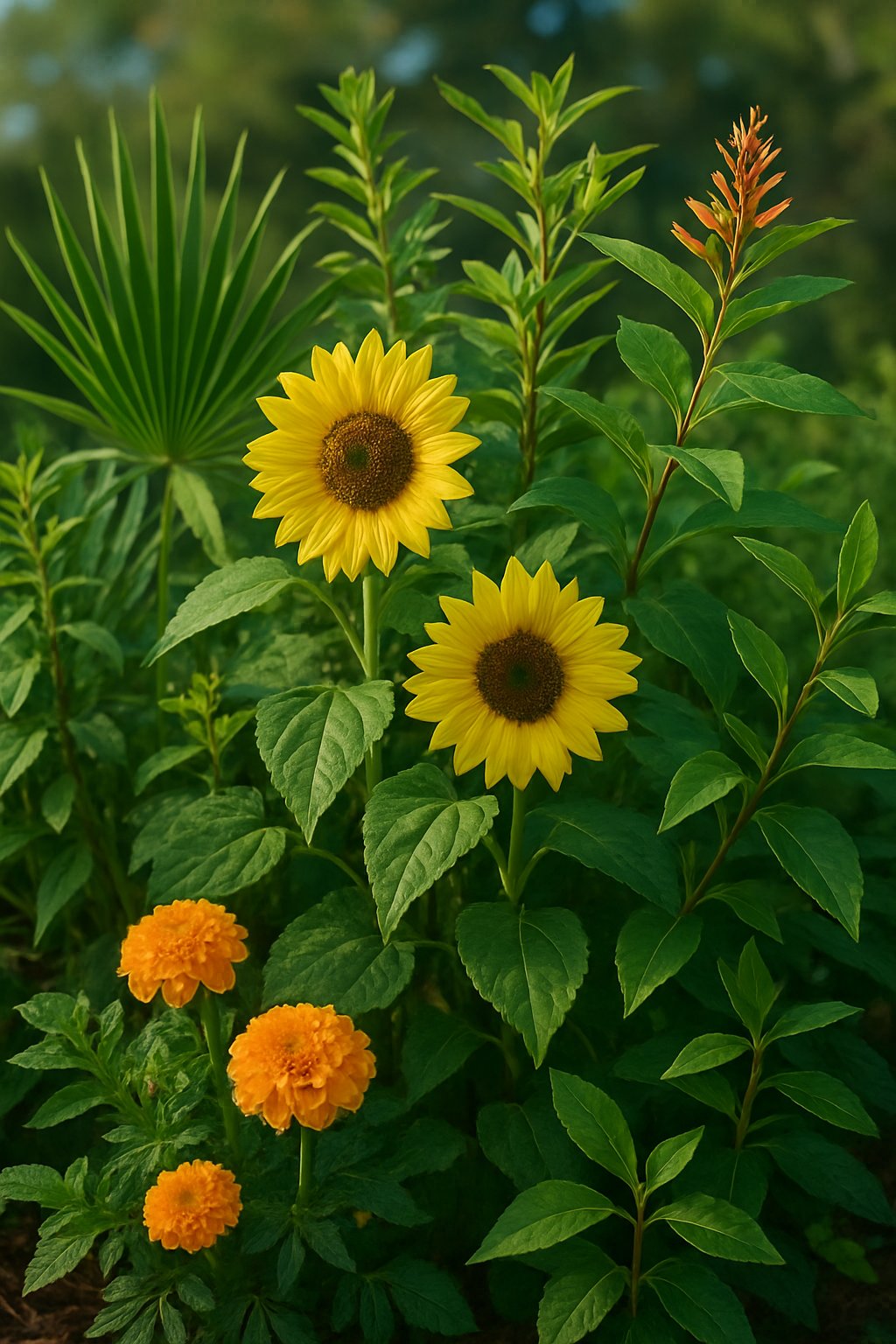
Growing sun-loving plants in Florida is easier than you think. With warm weather and plenty of sunlight, you have many great options to choose from.
Whether you want bright flowers, hardy perennials, or colorful annuals, your garden can shine all year long.
Some plants, like Coreopsis and Salvia, are tough and handle heat well. Others, like marigolds, bring vibrant orange and yellow colors that brighten your space. Be sure to pick plants that fit your garden’s sunlight and water needs.
Remember to water your plants regularly, especially in dry spells. Using mulch can help keep soil moist and cool, which your plants will thank you for.
Here’s a quick list to keep in mind:
- Choose plants labeled “full sun”
- Consider heat-loving perennials for longer blooms
- Add some annuals for fresh colors each season
- Mulch and water as needed to keep plants healthy
With these tips, your Florida garden can be a fun project and a relaxing space. Enjoy trying new plants and watching them grow in the bright sunshine!

